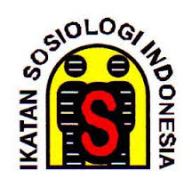Publication code of conduct statement is a statement of a code of ethics for all parties involved in the publication process in scientific journals such as managers, editors, peer reviewer, and authors. The ethics of publication of the Jurnal Empirika were adopted from the Head of LIPI Regulation No. 5 of 2014 concerning the Code of Ethics for Scientific Publications. This Code of Conduct for Scientific Publications upholds three ethical values in publications which are (i) neutrality, which is free from conflicting interests in managing publications; (ii) justice, which is giving authorship rights to those who are entitled as authors; and (iii) honesty, which is free from duplication, fabrication, falsification, and plagiarism (DF2P) in publications.
Roles and Responsibilities of the Journal Manager
- Determine the name of the journal, scope of science, validity, and accreditation if necessaryÂ
- Determine editorial board membershipÂ
- Define the relationship between the publisher, editor, peer reviewer, and other parties in a contract respect confidential matters both for contributing researchers, authors, editors, and peer reviewersÂ
- Apply norms and provisions regarding intellectual property rights especially copyrightsÂ
- Review journal policies and present them to authors, editorial boards, peer reviewers, and readersÂ
- Create a code of conduct guide for editors and peer reviewersÂ
- Publish journals regularlyÂ
- Guarantee the availability of financial resources for the sustainability of journal publishingÂ
- Build a network of cooperation and marketing, andÂ
- Prepare licensing and other aspects of legality.Â
Roles and Responsibilities of Journal Editor
- Meet the needs of readers and authorsÂ
- Strive to continuously improve the quality of publicationsÂ
- Implement a process to guarantee the quality of published worksÂ
- Promote freedom of opinion objectivelyÂ
- Maintain the integrity of the author’s academic track recordÂ
- Submit corrections, clarifications, withdrawals, and apologies if neededÂ
- Responsible for the style and format of the paper, whereasÂ
- Actively soliciting the opinions of authors, readers, peer reviewers, and editorial board members to improve the quality of publicationsÂ
- Encourage evaluation of the journal if there are any findingsÂ
- Support initiatives to reduce research and publication errors by asking authors to attach an ethical clearance form which has been approved by the ethical clearance commissionÂ
- Support initiatives to educate the researchers on the publication ethicsÂ
- Review the effects of published policies on the attitudes of authors and peer reviewers and improve them to increase responsibility and minimize errorsÂ
- An open mind for new opinions or other people's views which may conflict with personal opinionsÂ
- Not defending the opinions of oneself, the authors, or third parties which can lead to unobjective decisions, andÂ
- Encourage the authors to improve their writings worthy of publication.Â
Roles and Responsibilities of Peer-Reviewer
- Obtain the task of the editor to study the paper and submit their review to the editor as material for determining the eligibility of a paper to be publishedÂ
- Not reviewing papers which involve themselves both directly and indirectlyÂ
- Maintain the confidentiality of the author by not disseminating the results of corrections, suggestions, recommendations for the manuscript they reviewedÂ
- Encourage the author to improve the manuscriptÂ
- Re-examine the manuscript which has been corrected under the specified standards, andÂ
- Review the manuscript promptly following the style of the journal's environment and based on scientific principles (data collection methods, author's legality, concluding, etc.).Â
Roles and responsibilities of Authors
- Ensure that those on the author’s list meet the criteria as an authorÂ
- Collective responsibility for work and contents of manuscripts/articles which include methods, analysis, calculations, and detailsÂ
- State the origin of resources (including funding) both directly and indirectlyÂ
- Explain limitations in researchÂ
- Respond to comments made by the peer-reviewers in a professional and timely mannerÂ
- Inform the editor if he will retract his writing, andÂ
- Make a statement that the paper submitted for publication is original, has never been published anywhere in any language, and is not in the process of being submitted to other publishers.






